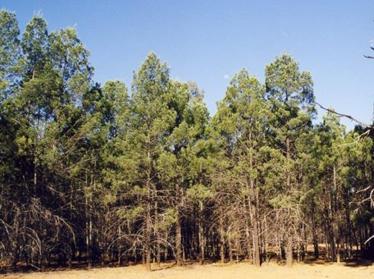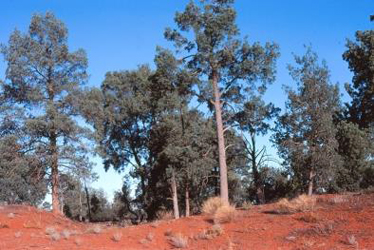Cypress-pine


Habitat type: Cypress-pine
Other key words: Cypress pine woodlands and open-forests, Callitris
Description: Cypress-pine woodlands and open-forests in Queensland generally have cypress-pine (Callitris glaucophylla (white cypress-pine) or C. intratropica (coastal cypress-pine)) as the dominant tree species, either in pure stands, or in a mixture with Eucalyptus, Angophora or Corymbia species. The trees range in height from 10 to 30 m, and the canopy cover can vary from 20 – 80 %. The ground layer can be grassy or shrubby. Mosses and lichens may be abundant and diverse, either growing on the trees, or in the soil crust. Some of the more common and widespread tree species associated with Callitris sp. are silver-leaved ironbark (E. melanophloia), narrow-leaved ironbark (E. crebra), rusty gum (Angophora leiocarpa), Corymbia clarksoniana and Moreton Bay ash (Corymbia tessellaris).
Some animals that use this habitat type: Major Mitchell’s cockatoo, white-browed treecreeper, swamp wallaby, large-eared pied bat and golden-tailed gecko.


